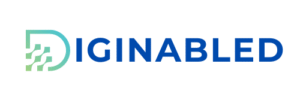Digital marketing has become an ever-evolving landscape, shaped by technology, consumer behavior, and industry innovation.
Staying ahead of the curve in this dynamic field is essential for businesses aiming to connect with their target audience effectively.
In this article, we’ll explore some of the most prominent current trends in digital marketing that are shaping the industry in 2023.
Video Marketing
Video marketing continues to be one of the most powerful and engaging forms of content.
With the rise of platforms like TikTok, Instagram Reels, and YouTube, businesses are focusing on short-form videos and live streaming to connect with their audience.
Videos provide a dynamic way to convey information, showcase products, and tell compelling stories.
Influencer Marketing
Influencer marketing has matured into a mainstream strategy. Brands are collaborating with influencers across various niches to tap into their engaged and loyal audiences.
Micro-influencers, in particular, are gaining popularity for their niche expertise and more authentic connections with followers.
Voice Search Optimization (VSO)
As voice-activated devices like Amazon Alexa and Google Assistant become more prevalent, optimizing content for voice search is crucial.
Businesses are adapting their SEO strategies to include conversational keywords and natural language queries, making it easier for voice search users to find relevant information.
AI and Machine Learning (ML)
Artificial Intelligence (AI) and Machine Learning (ML) are transforming digital marketing by automating processes and personalizing user experiences.
AI-driven chatbots, recommendation engines, and data analysis tools are helping businesses provide more efficient customer service and tailor marketing messages to individual preferences.
Content Marketing Evolution
Content marketing remains a cornerstone of digital marketing, but it’s evolving.
Long-form content, such as comprehensive guides and pillar pages, is gaining traction for its ability to establish authority and improve SEO.
Additionally, interactive content like quizzes, polls, and interactive infographics is increasing engagement.
Social Commerce
Social media platforms are becoming more e-commerce-friendly. Features like Instagram Shopping, Facebook Marketplace, and Pinterest Buyable Pins allow users to shop directly within the social media environment.
Businesses are leveraging these features to streamline the customer journey and drive sales.
Data Privacy and Compliance
With growing concerns about data privacy, regulations like GDPR and CCPA are forcing businesses to prioritize data security and transparency.
Consumers are becoming more conscious of how their data is used, and brands that respect privacy and comply with regulations will earn trust.
User-Generated Content (UGC)
User-generated content (UGC) continues to be a valuable asset for businesses.
Encouraging customers to create content, such as reviews, testimonials, and user-generated videos, can build authenticity and trust in your brand.
Augmented Reality (AR) and Virtual Reality (VR)
AR and VR technologies are making waves in marketing, especially in industries like retail and real estate.
AR apps enable customers to visualize products in their real-world environment before making a purchase, enhancing the shopping experience.
Sustainability and Social Responsibility
Consumers are increasingly concerned about sustainability and social responsibility. Brands that align themselves with environmental and social causes are not only making a positive impact but also appealing to conscious consumers.
Current Trends in Digital Marketing : Conclusion
Digital marketing is a dynamic and ever-changing field, and staying informed about current trends is essential for success.
Businesses that adapt to these trends and incorporate them into their marketing strategies will be better positioned to connect with their audience, drive engagement, and achieve their goals in 2023 and beyond.
To remain competitive, it’s crucial to continuously evolve and embrace the latest digital marketing innovations and strategies.
This Article is Part of Our Digital Marketing Introductory Series

